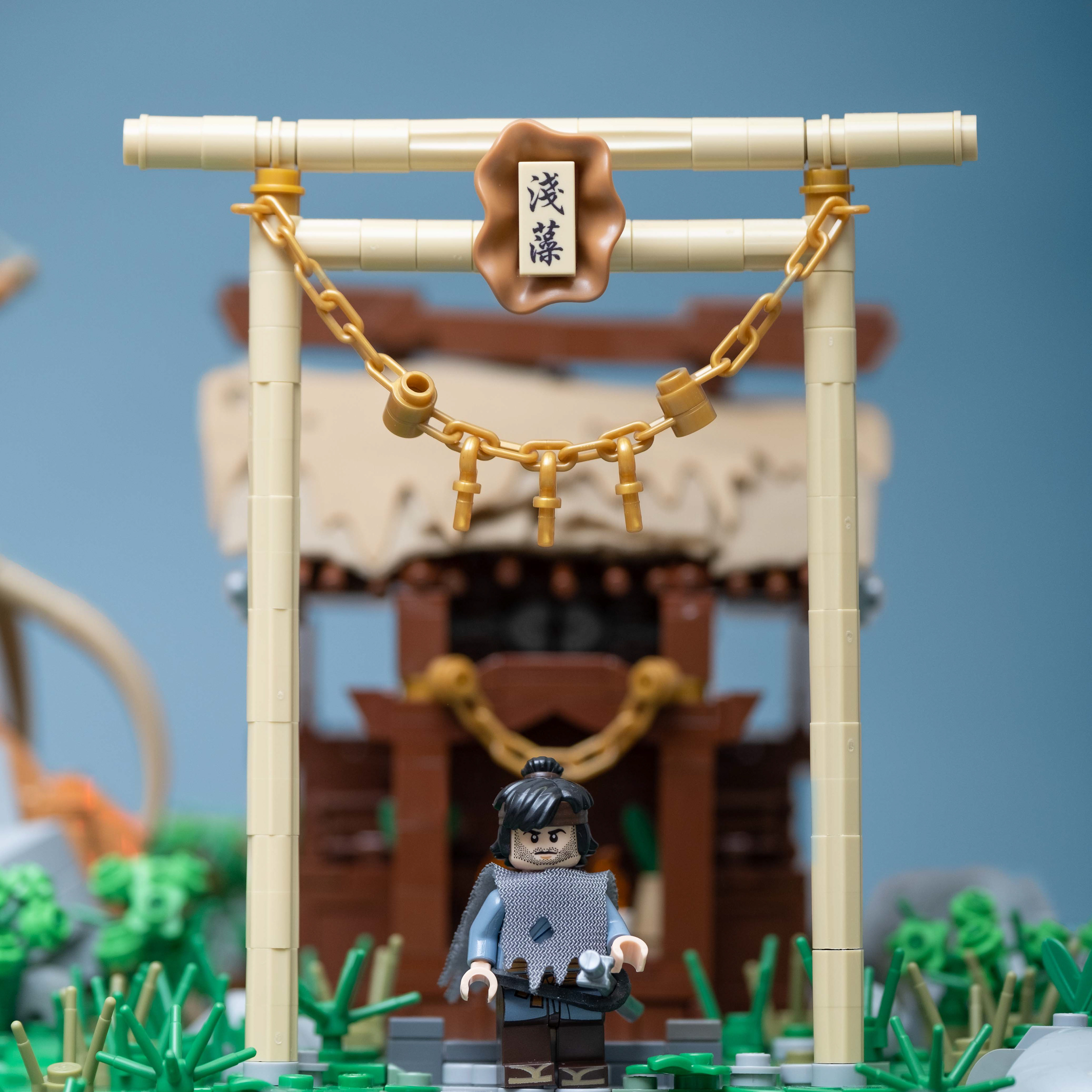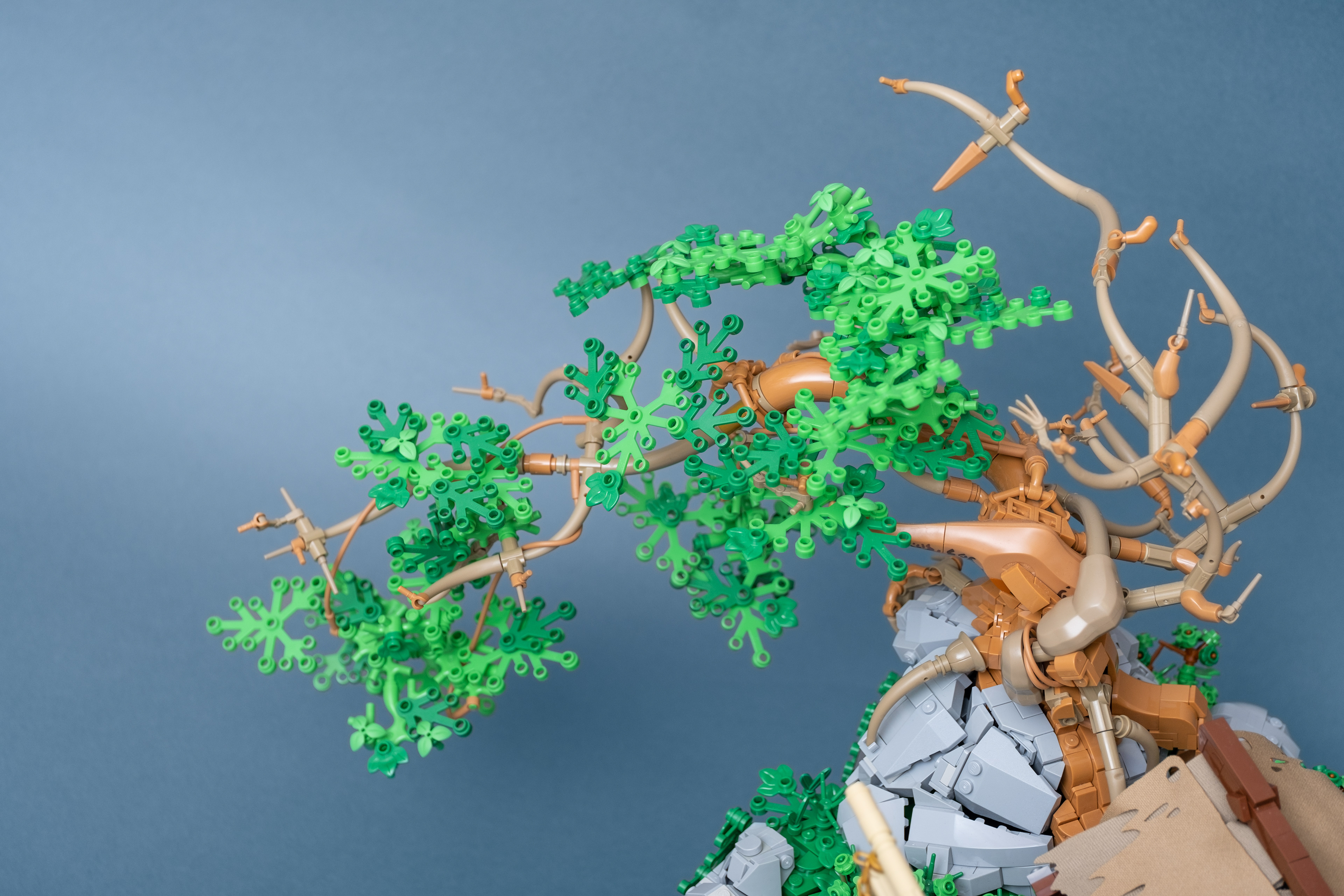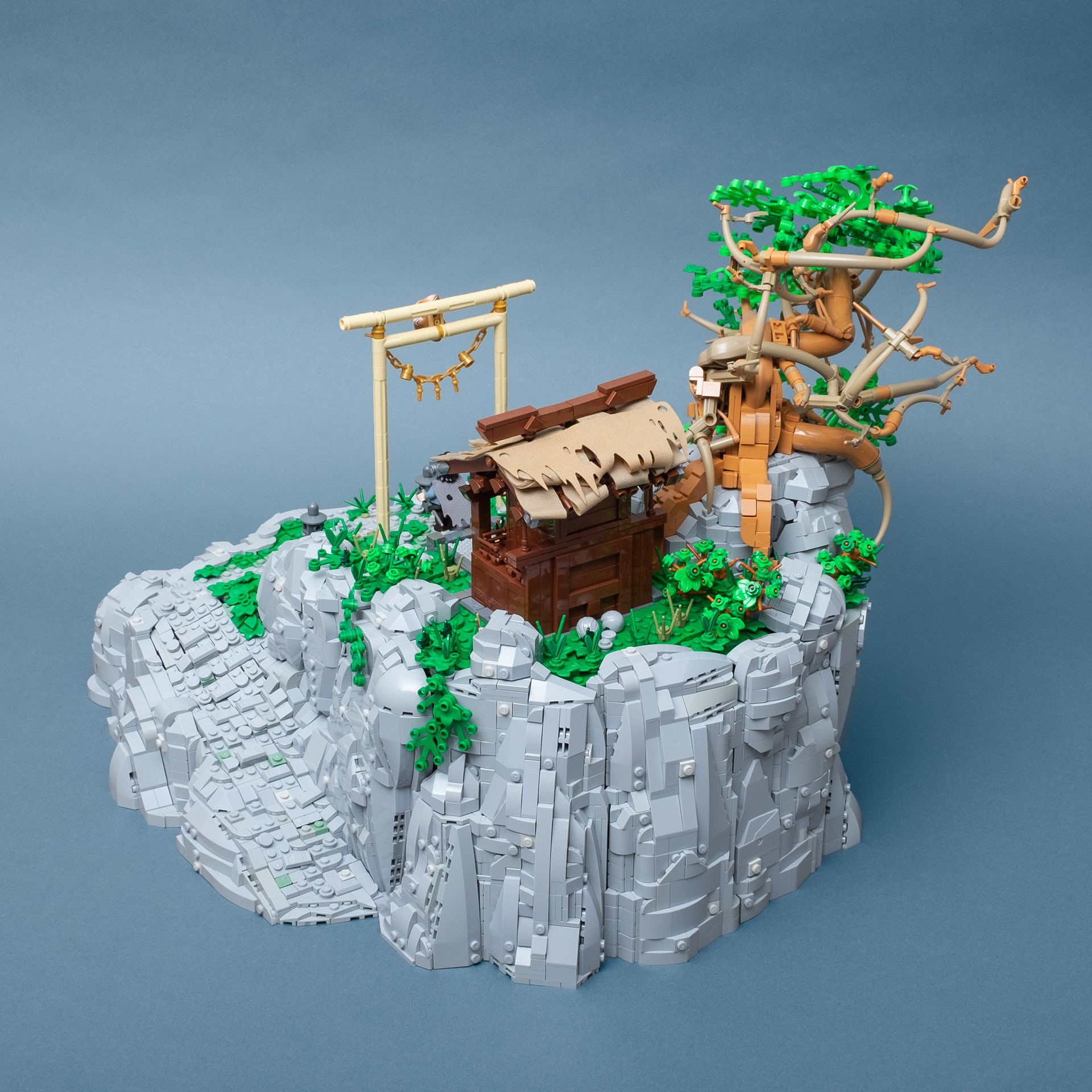Ghost of Tsushima was developed by Sucker Punch Productions LLC, a studio based in Bellevue, Washington and published by Sony Interactive Entertainment in July of 2020. The game is loosely based on the first Mongol invasion of the island of Tsushima (対馬) in 1274. Set within that historic context, the game tells a fictional story, following the samurai Jin Sakai as he seeks to repel the Mongols that have taken over the island, free his uncle Lord Shimura and restore peace. In doing so, Jin slowly abandons the samurai code and becomes 'The Ghost', a fearsome warrior that seeks to triumph over the invaders by any means necessary. The game is much more focused on Jin's own struggle with his heritage and the burden the samurai code puts on him. By fighting with honour, as the code demands, the samurai of Tsushima are fated to perish by the hands of merciless Mongols. Being aware of this, Jin is not concerned with maintaining any kind of moral code, but simply wants to protect the island and its people which are on the verge of devastation. Ghost of Tsushima does an excellent job in evoking that same desire in the player: The island is a beautiful and sacred place. The wind gushing through the trees, leaves flying through the air and the sound of farmers tending to their fields offer a sense of tranquility and serenity. Nature seems to be in perfect harmony with the people everywhere you go. But if you climb on top of one of the several mountains, you can see black smoke filling the horizon. A sign of the destruction the Mongols leave behind and a constant reminder of the threat they pose.
Ghost of Tsushima is not a historically accurate game, but instead offers a romanticised impression of the time-period. It is heavily influenced by the works of Akira Kurosawa and allows the player to live out the samurai fantasy his films evoke. All of its gameplay elements are designed with that goal in mind. Similarly, the island itself is meticulously crafted to offer a realistic, yet fantastical backdrop.
But the island is exactly that, a backdrop. While it is filled with landmarks, towns and points of interest, the main story of the game does not necessarily lead to them. The player can decide for themselves how much of it they want to explore. This is typical for open-world games, but in the case of Ghost of Tsushima, I think the design decision really works. Jin's lust for revenge is enough motivation to drive the main plot forward. But if the player chooses to seek out these other points of interest, Jin's motivation gets an entirely new dimension. Through exploration the player themselves experiences Tsushima as a truly beautiful and serene place that is worth preserving and protecting.
One of these points of interest are the shintō (神道) shrines (神社 [jinja]) scattered across Tsushima. Shintō has a long and multifaceted history. The game focuses on shintō being a nature religion that worships kami (神), deities that inhabit all things. Shrines are built at points where the spiritual power of nature is particularly strong. This is an oversimplified description of an aspect of shintō beliefs but it is one the game emphasises heavily. The shrines found in Ghost of Tsushima are fictional and each stands next to a formation of beautiful trees that can be found nowhere else in the game. The idea, that a spirit possesses these natural formations is physically made manifest in the unique way these locations are designed. Every time you find one of these shrines the camera pulls back and flies over the landscape towards it, further highlighting it as the spiritual core of the world around. I was awestruck by the beauty of these locations and, after finishing the game, decided to recreate one of them with LEGO® bricks.



The shrine I chose is named the Arrow Peak Shrine and is probably the first one many players stumble across. It is located in the region of Izuhara (厳原) the first part of Tsushima that can be explored. Izuhara is divided into seven prefectures. In the game, each of these prefectures has exactly one shintō shrine. The Arrow Peak Shrine can be found in the middle of Azamo (淺藻), the southern most prefecture. For that reason, the name Azamo is also written on the sign of the torii (鳥居), the wooden archway in front of the shrine. To recreate it, I had the Kanji printed on a tan (Colour-ID 2) LEGO® tile and used a Minifigure skirt (Part-ID 24782pb05) as a frame.
The reason I chose this particular shrine is that I liked the shape of the tree the most out of all of them. It is the only one that, instead of stretching towards the sky, bends to the side and downward as if the strong winds forced it in that direction. Additionally, only roughly half of it is covered in leaves, while the other half is made of a complicated net of barren, twisted branches. I think it is a fascinating and truly surreal shape and would make for an exciting challenge to recreate with LEGO® bricks. Another interesting aspect are the colours: The tree has a light brown tone, much brighter than the colour of the shintō shrine. I decided early on, that the LEGO® colours medium nougat (Colour-ID 150) and dark tan (69) would be the most fitting, however the part selection for these colours is severely limited. The branches were not a problem as I could use Minifigure hands (Part-ID 983 and 28660), Droid arms (30377), wands (36752a) as well as tails (40378 and 40379) and claws (10187) to create them. But for the tree trunk I had to come up with some creative part usage to maintain an organic shape that is true to the original: The body of a dinosaur raptor (Part-ID 98165c01pb12) creates the centre of the tree, while two giant arms (10124 and 10154) wrap around it. These parts give the trunk a similarly twisted look as the reference.
"Father said the kami will keep us safe. The shrine would be a good hiding spot, offer us protection"
- from the 'Shrine Protection' scroll
Keeping the tree as light as possible was important in order to not bend the bricks. So instead of building branches extending downwards over the edge, it was far more efficient to just suspend the leaves on flexible zip-lines (Part-ID 27965). Wrapping the zip-lines around the main branches allowed me to control their length and to give the tree the same shape as the original. I only built a small podium to lift the tree and test this technique, before committing to the entire diorama.
The next step was building the shrine itself. Compared to the tree, this was pretty straight forward. The only part that deserves special attention is the roof: It is in a similarly light colour as the tree, but I wanted to avoid using dark tan pieces again. Therefore I instead used two different cloth pieces (Part-ID 24902 and 32653).
The path up to the shrine is actually quite steep for a Minifigure, but I wanted to give it the appearance of a footpath that can be walked on. So I refrained from using slopes or stacking bricks on top of each other. Instead, I used a LEGO® net (Part-ID 71155) as the underlaying structure on which each individual plate is fixed. This allowed for a steep but smooth curvature while also having visible studs throughout the entire path. In total three nets were used to build the turn of the path before transitioning into hinged pieces further down the side.



"I'm so tired but I can't sleep. Not while the sun is out.
It's beautiful up here."
- from the 'Burial' scroll
While journeying to the Arrow Peak Shrine, the player can collect multiple scrolls that tell the story of how a family fled from the Mongols and sought refuge at the top of the mountain. On their way, they destroyed the wooden bridge behind them to halt their pursuers. That is the reason why, in the present, Jin has to climb the cliffside to reach the shrine. The mountain itself is therefore quite an important part of the build. Not only is it necessary to lift the tree high enough to allow for the hanging leaves, it also tells its own story in the game world. I spent a lot of time shaping and texturing the rocks. Each of the formations should look unique and not repeat throughout the model, yet it was important to establish a common design language so nothing looks out of place. To do so, I decided on a certain selection of parts to use: Most of the rocks are made with plates, tiles, slopes and wedges in light bluish grey (Colour-ID 86) but I also used LEGO® rock panels (Part-ID 47847) as well as some pieces in light grey (Colour-ID 9) and very light grey (49) to give some additional highlights.
Most important, however, was making sure that the formation bends naturally around the path. To achieve that, only a single rock in each cardinal direction is within the LEGO® system of 90° degrees and all formations in-between are at a slight angle. Additionally, some rocks are connected with ball joints so they could be tilted in a 3-dimensional space. Getting all these different formations to align and connect harmoniously with the path was the most time-consuming task. It also was a true balancing act, making the gaps small enough to create the impression of a fluent rock form while keeping enough cracks and crevices for it to look realistic and climbable.


